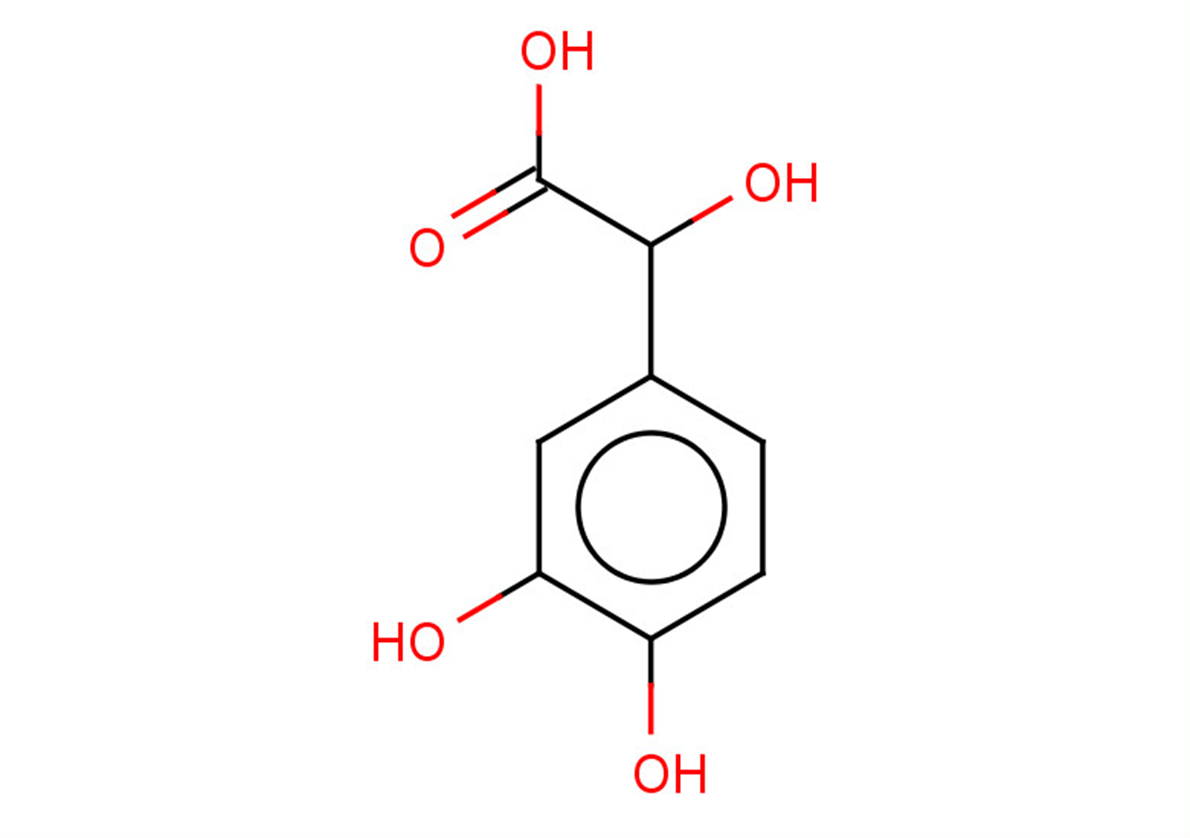
3,4-Dihydroxymandelic acid
CAS No. 775-01-9
3,4-Dihydroxymandelic acid( —— )
Catalog No. M24778 CAS No. 775-01-9
3,4-Dihydroxymandelic acid exists in all living organisms, ranging from bacteria to humans.
Purity : >98% (HPLC)
 COA
COA
 Datasheet
Datasheet
 HNMR
HNMR
 HPLC
HPLC
 MSDS
MSDS
 Handing Instructions
Handing Instructions
| Size | Price / USD | Stock | Quantity |
| 10MG | 45 | In Stock |


|
| 50MG | 72 | In Stock |


|
| 100MG | 126 | In Stock |


|
| 200MG | Get Quote | In Stock |


|
| 500MG | Get Quote | In Stock |


|
| 1G | Get Quote | In Stock |


|
Biological Information
-
Product Name3,4-Dihydroxymandelic acid
-
NoteResearch use only, not for human use.
-
Brief Description3,4-Dihydroxymandelic acid exists in all living organisms, ranging from bacteria to humans.
-
Description3,4-Dihydroxymandelic acid exists in all living organisms, ranging from bacteria to humans. Within humans, 3,4-dihydroxymandelic acid participates in a number of enzymatic reactions. 3,4-Dihydroxymandelic acid is a metabolite of norepinephrine.
-
In Vitro——
-
In Vivo——
-
Synonyms——
-
PathwayProteasome/Ubiquitin
-
TargetEndogenous Metabolite
-
RecptorEndogenous Metabolite
-
Research Area——
-
Indication——
Chemical Information
-
CAS Number775-01-9
-
Formula Weight184.15
-
Molecular FormulaC8H8O5
-
Purity>98% (HPLC)
-
SolubilityDMSO:83.33 mg/mL (452.51 mM; Need ultrasonic)
-
SMILESOC(C(O)=O)c(cc1)cc(O)c1O
-
Chemical Name——
Shipping & Storage Information
-
Storage(-20℃)
-
ShippingWith Ice Pack
-
Stability≥ 2 years
Reference



-
3-Hydroxybutyric aci...
3-Hydroxybutyric acid (or beta-hydroxybutyrate) is a ketone body. Like the other ketone bodies (acetoacetate and acetone) levels of 3-hydroxybutyrate in blood and urine are raised in ketosis. In humans 3-hydroxybutyrate is synthesized in the liver from acetyl-CoA and can be used as an energy source by the brain when blood glucose is low.
-
Nα-Acetyl-L-lysine
N-Alpha-acetyllysine is a N-acetylated amino acid. It is a normal constituent of human urine with concentrations in normal samples too small to allow its routine detection; however it has been found at increased levels in the urine of a patient with aminoacylase I deficiency.
-
5-Methylcytidine
5-Methylcytidine is a modified nucleoside derived from 5-methylcytosine and is a minor constituent of RNA as well as DNA for certain organisms.



 Cart
Cart
 sales@molnova.com
sales@molnova.com


